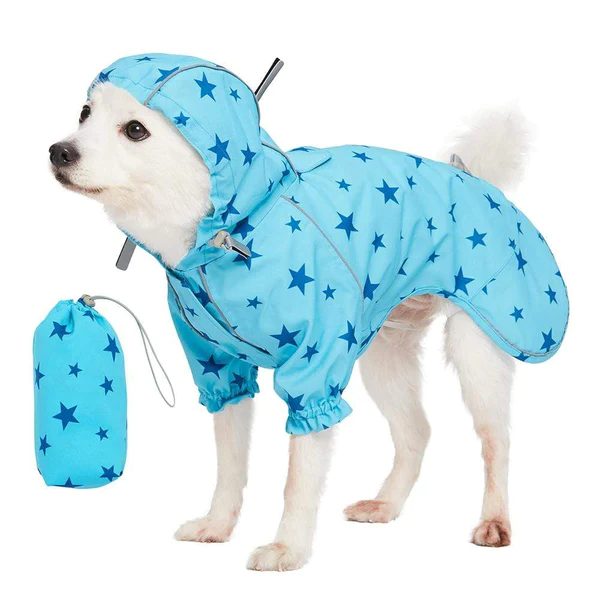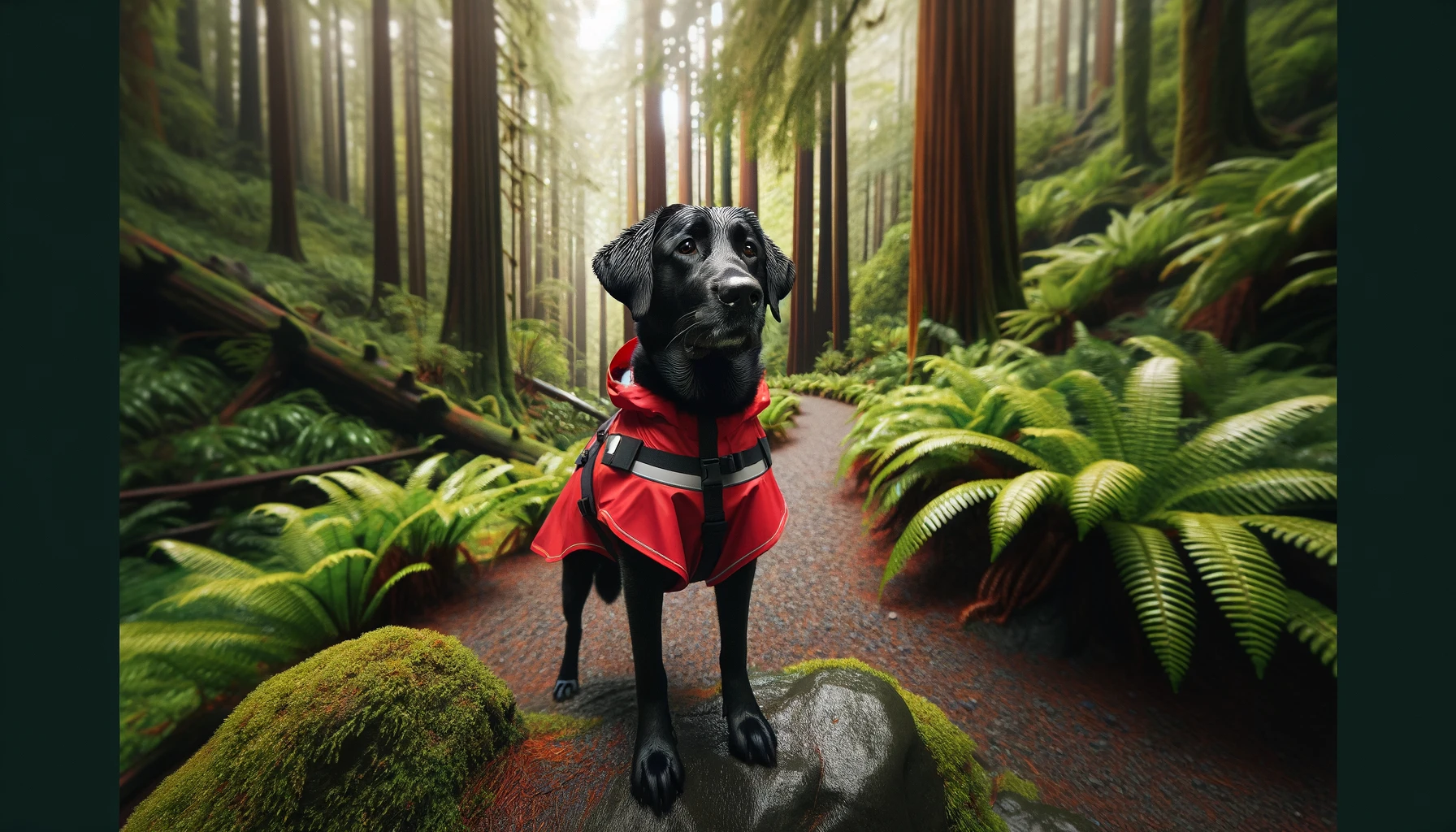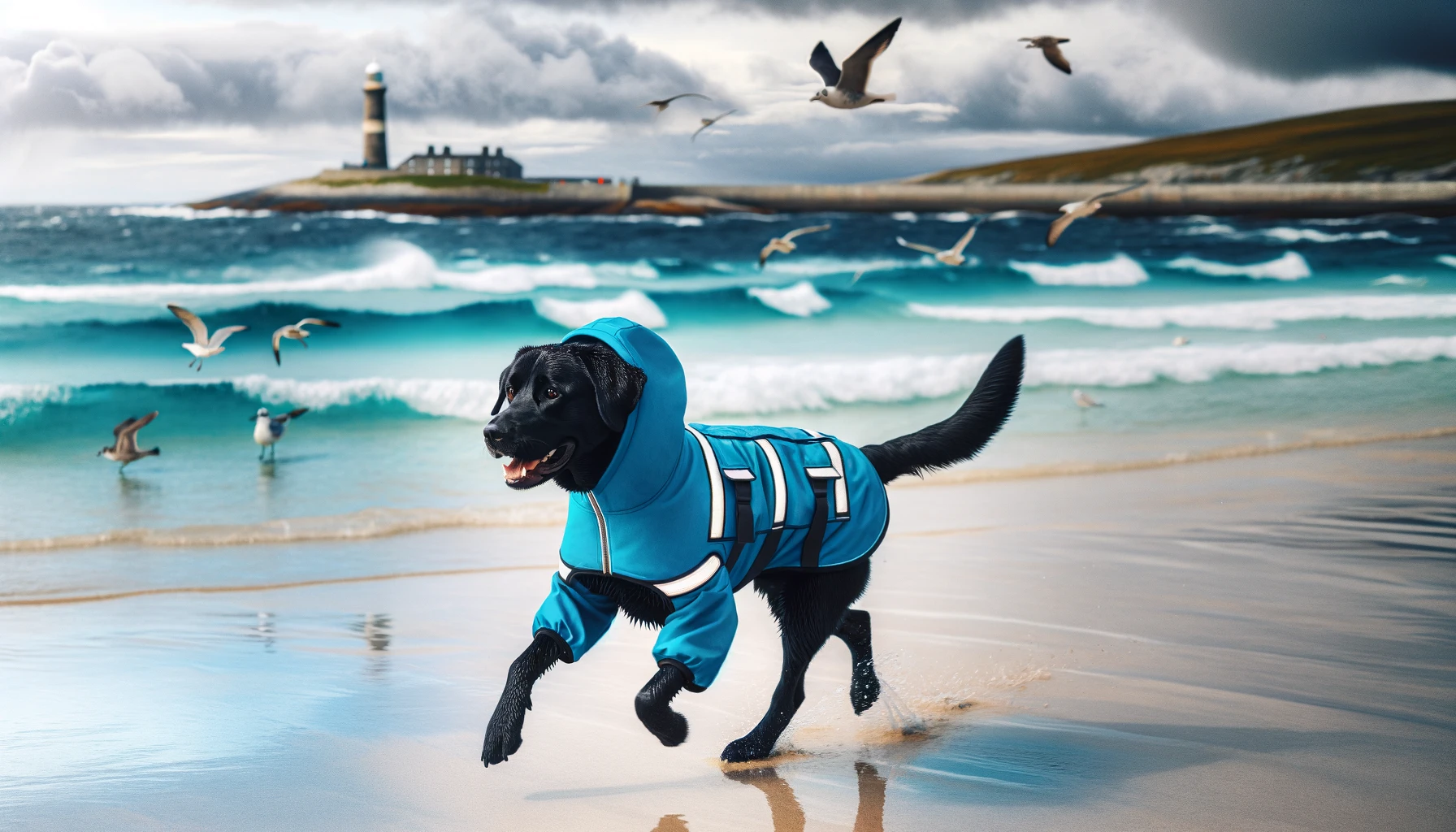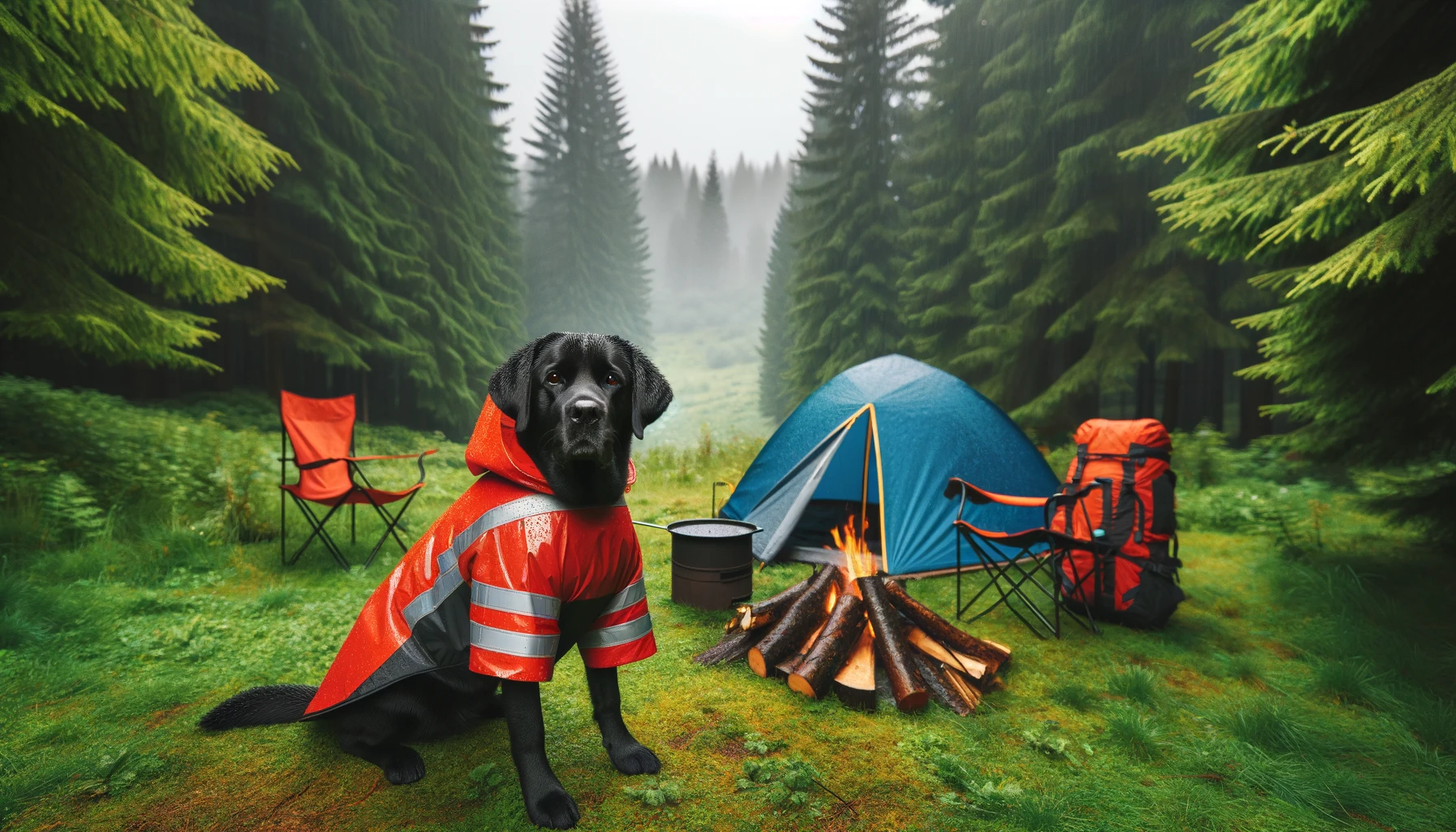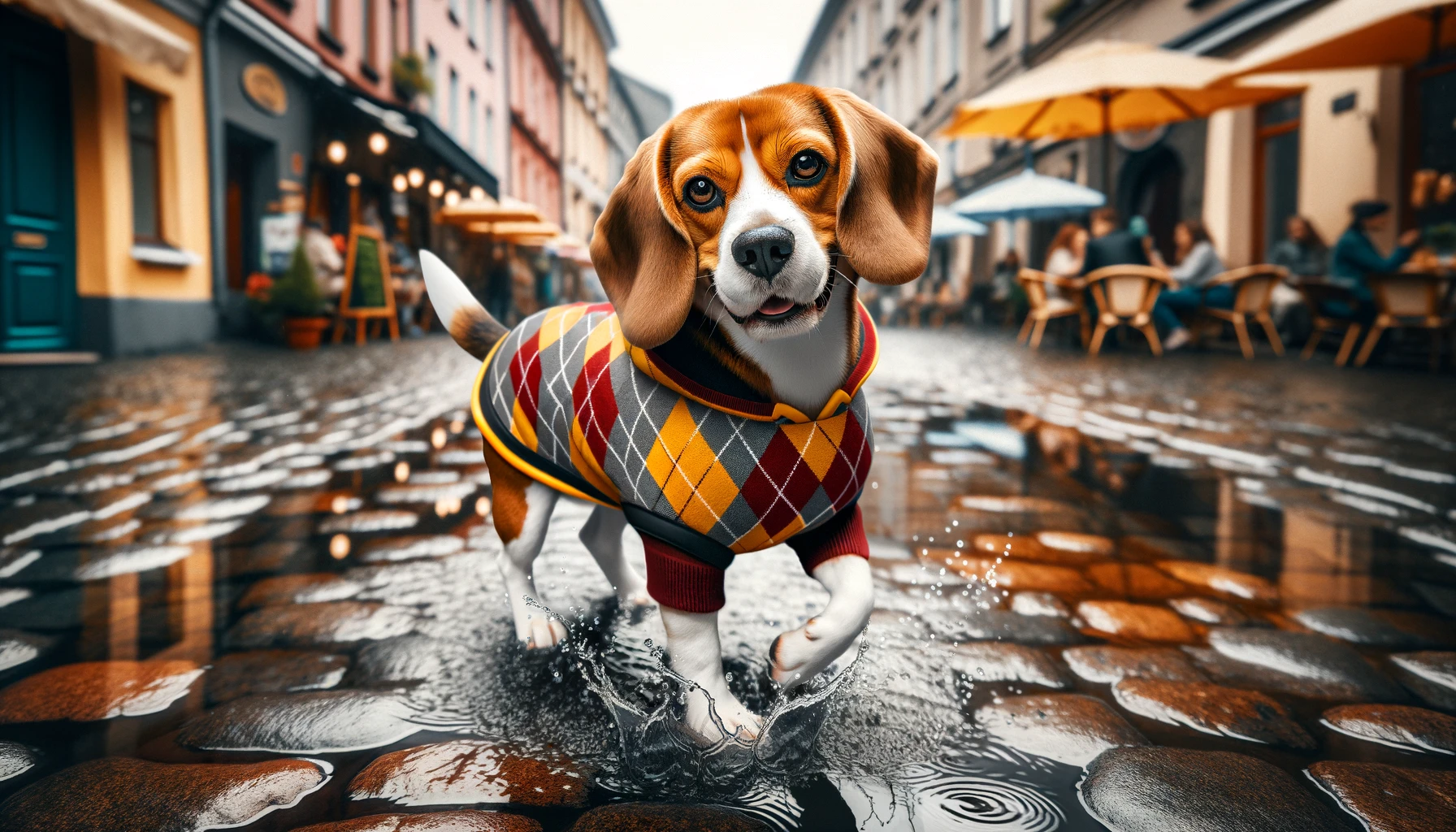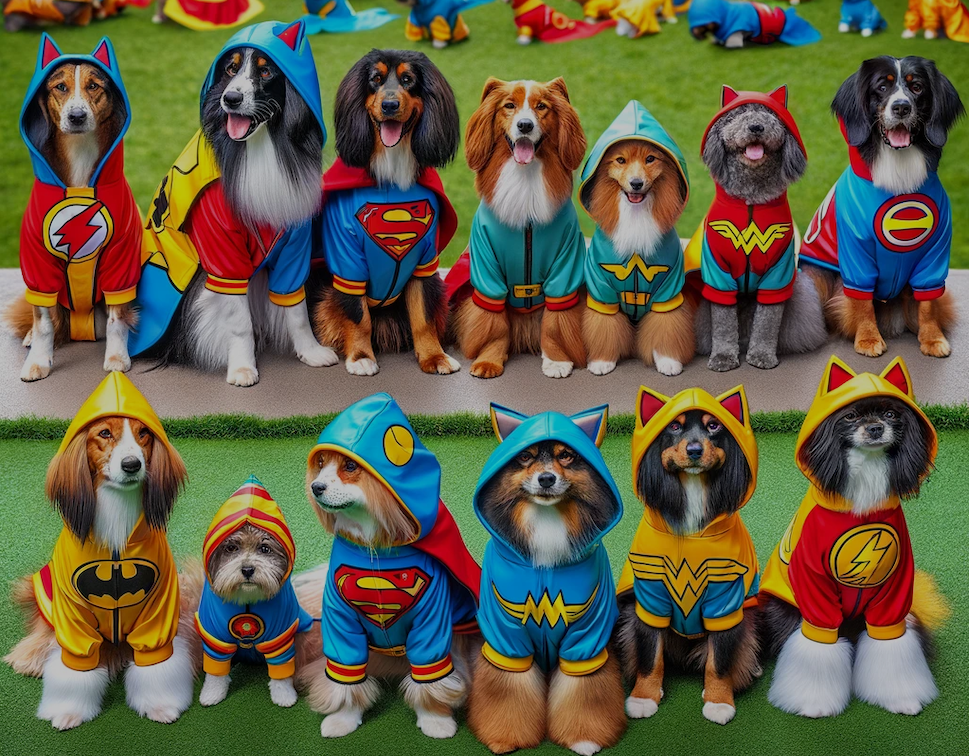As a responsible dog owner, you know that keeping your furry friend dry and comfortable during rainy weather is essential. Investing in a high-quality dog raincoat is the first step, but proper maintenance is equally important to ensure your pup’s gear remains in top shape. In this comprehensive guide, we’ll dive into the best practices for cleaning, drying, storing, and maintaining your dog’s raincoat, so you can keep your four-legged companion happy and healthy, no matter the weather.
Choosing the Right Raincoat for Your Dog
Before we delve into maintenance tips, it’s crucial to select the perfect raincoat for your dog. Consider the following factors when making your choice:
- Size and Fit: Measure your dog’s neck, chest, and length to ensure a comfortable and secure fit. A well-fitting raincoat should allow for easy movement without being too loose or restrictive.
- Material: Look for raincoats made from waterproof or water-resistant materials, such as polyester or nylon. Breathable fabrics are also essential to prevent overheating during extended wear.
- Features: Additional features like adjustable straps, reflective elements, and leash openings can enhance your dog’s comfort and safety during rainy walks.
By selecting a raincoat that meets your dog’s specific needs, you’ll be better equipped to keep them dry and comfortable in any weather condition.
Common Issues and Solutions for Dog Raincoats
Even with the best intentions, dog raincoats can encounter various issues. Here are some common problems and their solutions:
- Leaks: If you notice water seeping through your dog’s raincoat, it may be due to worn seams or a damaged waterproof coating. Apply a waterproofing spray or seam sealer to restore the coat’s water-repellent properties.
- Odors: Wet dog raincoats can develop unpleasant odors over time. To combat this, wash the raincoat regularly using a mild detergent and allow it to air dry completely before storing.
- Matted Fur: Some dogs may experience matting or tangling of their fur underneath the raincoat. To prevent this, ensure your dog’s coat is brushed and free of tangles before putting on the raincoat. Consider using a light, breathable lining to minimize friction.
- Chafing: If your dog experiences chafing or irritation from the raincoat, check for proper fit and adjust straps as needed. Apply a pet-safe anti-chafing balm to sensitive areas before putting on the coat.
By addressing these common issues promptly, you can keep your dog’s raincoat in optimal condition and ensure your pup remains comfortable during wet weather adventures.
Step-by-Step Guide to Cleaning Your Dog’s Raincoat
Regular cleaning is essential to maintain your dog’s raincoat’s appearance, functionality, and longevity. Follow these steps for a thorough clean:
- Brush off Debris: Before washing, use a soft-bristled brush to remove any dirt, mud, or debris from the raincoat’s surface.
- Spot Clean: For small stains or soiled areas, apply a mild detergent directly to the spot and gently scrub with a soft-bristled brush. Rinse the area thoroughly with clean water.
- Machine Wash: If the raincoat is machine washable, use a mild detergent and wash on a gentle cycle in cold water. Avoid using fabric softeners, as they can compromise the coat’s water-repellent properties.
- Hand Wash: For raincoats that require hand washing, fill a sink or basin with cool water and add a small amount of mild detergent. Submerge the raincoat and gently agitate the water to distribute the soap. Rinse thoroughly with clean water until all soap residue is removed.
- Drying: After washing, gently squeeze out excess water without wringing the raincoat. Hang the coat to air dry, away from direct sunlight or heat sources, which can damage the fabric or waterproof coating.
By following these cleaning steps regularly, you can keep your dog’s raincoat looking and functioning like new, ensuring your pup stays dry and comfortable during rainy outings.
Proper Drying Techniques for Dog Raincoats
Drying your dog’s raincoat correctly is just as important as cleaning it. Improper drying can lead to musty odors, mildew growth, and damage to the coat’s waterproof coating. Here are some tips for drying your dog’s raincoat:
- Air Drying: The best method for drying a dog raincoat is to hang it in a well-ventilated area, away from direct sunlight and heat sources. Avoid using a clothes dryer, as the high heat can damage the fabric and waterproof coating.
- Drying Time: The drying time for a dog raincoat depends on the material and thickness. Most raincoats will dry within a few hours, but some may take up to 24 hours. Be patient and ensure the coat is completely dry before storing or using it again.
- Reshaping: Some raincoats may lose their shape during the washing and drying process. To restore the coat’s original shape, gently stretch and reshape the fabric while it’s still damp. This will help maintain a proper fit for your dog.
- Removing Wrinkles: If your dog’s raincoat develops wrinkles during drying, you can use a cool iron or steamer to gently remove them. Always check the coat’s care label first, and use a low setting to avoid damaging the fabric or waterproof coating.
By following these drying techniques, you can ensure your dog’s raincoat maintains its shape, fit, and water-repellent properties, keeping your pup dry and comfortable during rainy adventures.
Storage Tips to Keep Your Dog’s Raincoat in Top Shape
Proper storage is crucial to maintain your dog’s raincoat’s quality and extend its lifespan. Follow these tips to keep your pup’s gear in top shape:
- Clean and Dry: Always ensure the raincoat is clean and completely dry before storing it. Any moisture left in the coat can lead to mildew growth and unpleasant odors.
- Hanging vs. Folding: If space allows, hang the raincoat on a sturdy hanger to maintain its shape and prevent wrinkles. If hanging isn’t an option, fold the coat loosely and store it in a breathable fabric bag or storage container.
- Cool, Dry Place: Store the raincoat in a cool, dry place away from direct sunlight, heat sources, and moisture. Avoid storing the coat in damp basements or humid attics, as these environments can promote mildew growth and damage the fabric.
- Waterproofing Maintenance: Before storing the raincoat for an extended period, consider applying a waterproofing spray or treatment to maintain its water-repellent properties. Follow the product instructions carefully and allow the coat to dry completely before storage.
- Periodic Checks: Every few months, take the raincoat out of storage and inspect it for any signs of damage, such as loose seams, tears, or mildew. Address any issues promptly to prevent further damage and ensure the coat is ready for use when needed.
By following these storage tips, you can keep your dog’s raincoat in excellent condition, ensuring it’s ready to protect your pup from the elements whenever the need arises.
Conclusion
Investing in a high-quality dog raincoat is a wise decision for any pet owner, but proper maintenance is essential to ensure your pup stays dry and comfortable during rainy weather. By following the expert tips outlined in this guide, you can keep your dog’s raincoat in top shape, extending its lifespan and ensuring your furry friend is always ready for a rainy adventure.
Remember to choose the right raincoat for your dog, address common issues promptly, and follow the step-by-step cleaning, drying, and storage guidelines. With proper care and maintenance, your dog’s raincoat will remain a reliable and essential gear for years to come, keeping your pup happy, healthy, and dry, no matter the weather.


